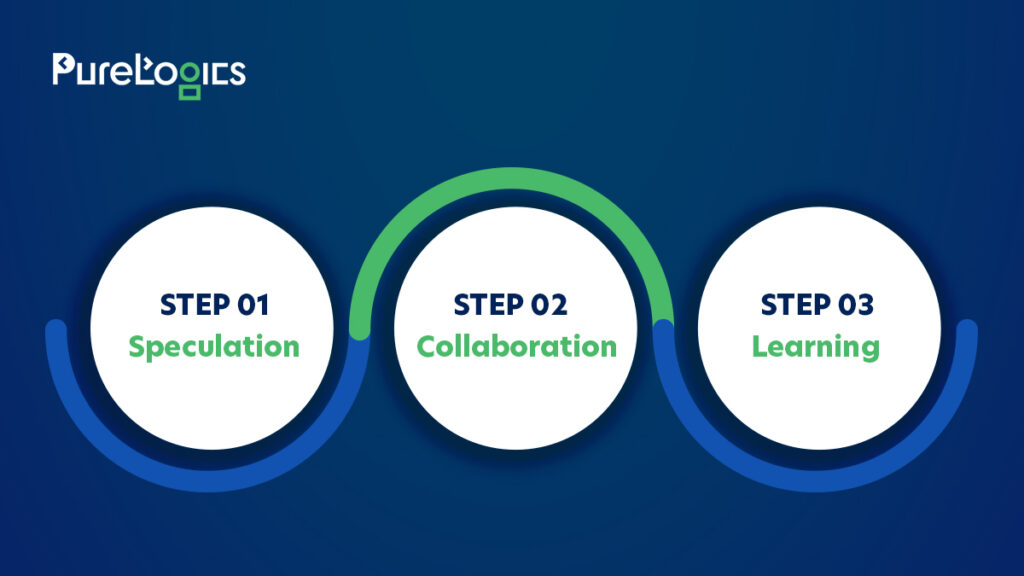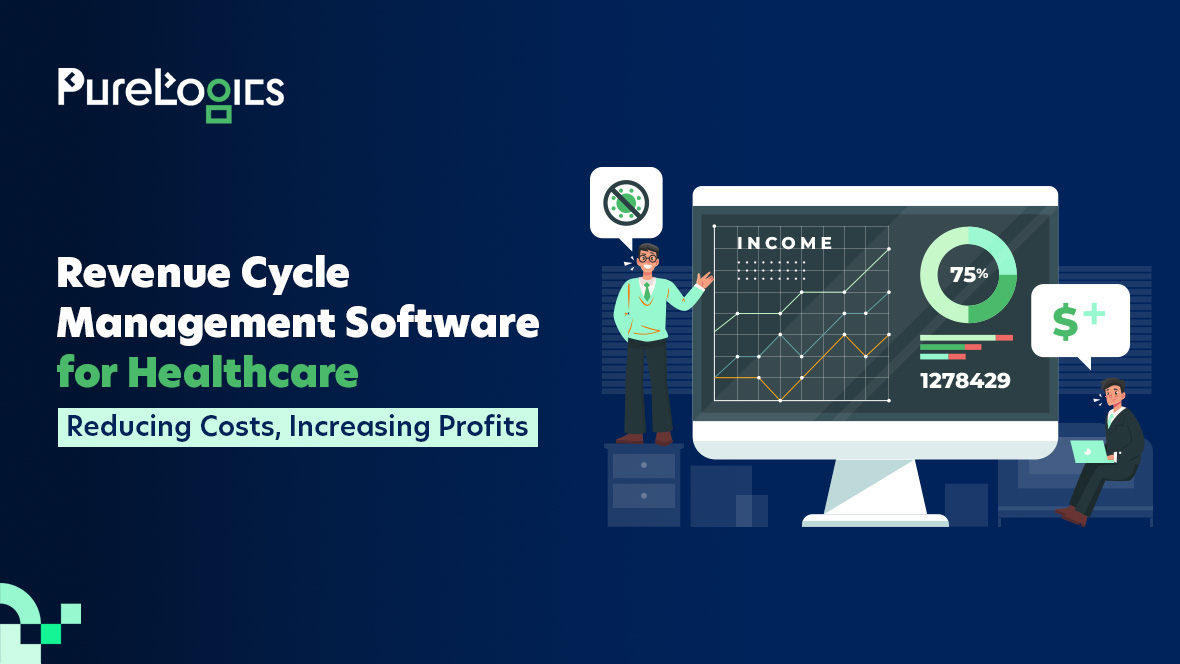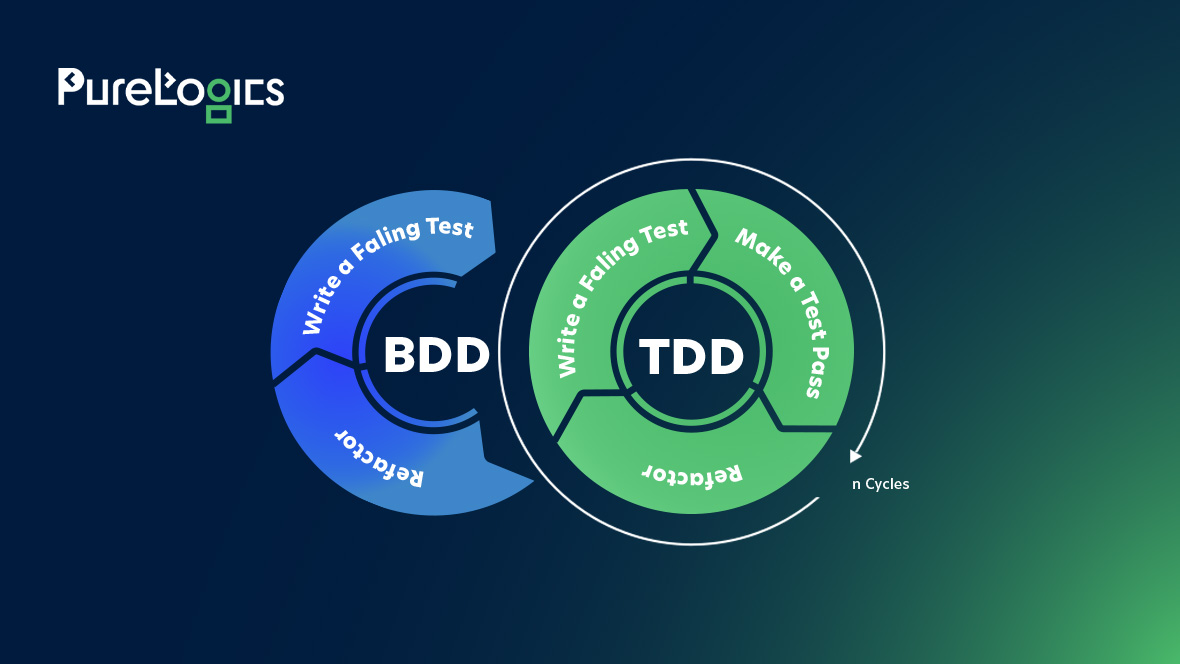Adaptive Software Development is a kind of agile method developed to resolve the issues of the waterfall model. Developed by the collaboration of Sam Bayer and Jim Highsmith in the early 90s, it emphasizes collaboration and handles quick changes in software development needs by emphasizing continuous learning and adjustment.
Derived from “Rapid Application Development,” this agile process helps the team instantly adjust to evolving market demands, challenges, and requirements. ASD follows no preplanned steps or any traditional life cycle; rather, it focuses on constant change, re-evaluation, and product evolution with lightweight planning and ongoing learning.
In simple words, ASD is a method for developing software that can handle software changes quickly and easily. It is a way of collaborative working where teams and stakeholders plan small parts of projects, analyze them, and learn from their outcomes.
In this blog post, PureLogics has explored the principles, phases, and benefits of implementing ASD in your business. We have also discussed how ASD differs from other development processes. So, without any further ado, let’s dive into the topic!
Contact Us Today
Get in touch to learn more about our services and how we can help you.
Core Principles of ASD
Adaptive software development is based on a few principles that guide its approach to overall software development. ASD focuses more on results rather than tasks that generate results. In other words, it doesn’t adhere to a strict plan but focuses on constant change while delivering on a mission. Following are the core ASD principles that resonate strongly with software developers:
Change is Sure to Happen
ASD believes that software technologies, requirements, and market conditions evolve on a regular basis. Adaptability is essential; rigid software development plans are often counterproductive.
Continuous Learning
The second core principle of ASD is continuous learning. It means that teams should collect feedback, interpret outcomes, and adjust their development approach iteratively. Not only do teams learn more about the software requirements, challenges, and expectations of new features as they are working on it, but they also know how not to adopt something. So, continuous learning and flexibility to re-think are crucial to developing quality software.
Collaboration
When you’re working in a dynamic environment, successful software development is the result of open collaboration among teams, clients, and stakeholders. Undoubtedly, collaboration is essential for software success, and it’s the environment where agile methodologies shine.
Phases of Adaptive Software Development Cycle
Instead of following a step-by-step and plan-driven process, ASD pursues an iterative process that includes “speculation, collaboration, and learning” phases.

Speculation
- Outline your initial project vision, objectives, and basic features.
- Estimate timelines and allocate core resources.
- Make a prototype and formulate component architecture.
Collaboration
- Conduct meetings with the team and stakeholders to get feedback.
- Refine your project requirements via communication and collaboration.
- Develop iterative cycles for incremental software releases.
Learning
- Perform rigorous software testing and obtain user feedback.
- Refine software architecture based on learnings.
- Identify areas of improvement and adapt the plan for the next iteration.
Adaptive software development is a cyclic process cycle that evolves through continual feedback and learning. Generally, ADS has no fixed phases. It is a dynamic process that handles evolving software needs. Open communication, collaboration, and testing allow teams to adjust their development approach according to emerging needs and requirements.
Benefits of Adaptive Software Development
ASD offers several benefits that make it a compelling choice for software development projects, particularly in environments characterized by uncertainty and rapid change.
Flexibility and Adaptability
One of the primary benefits of ASD is its ability to adapt to changing requirements. Because it embraces uncertainty and encourages continuous learning, ASD is well-suited for projects where requirements are likely to evolve over time.
Customer Collaboration
ASD emphasizes regular interaction with customers and stakeholders. This ensures that the product being developed aligns with customer needs and expectations. By incorporating feedback throughout the development process, ASD increases the likelihood of delivering software that meets or exceeds customer satisfaction.
Improved Team Dynamics
The collaborative nature of ASD fosters a positive team environment. Regular communication and teamwork help build trust and ensure that every team member is working towards common goals. This leads to increased morale and productivity.
Early and Continuous Delivery
By using iterative cycles, ASD enables early and continuous delivery of software. This means that stakeholders can see progress early on and provide feedback, which can be incorporated into subsequent iterations. Early delivery also allows for earlier detection and resolution of issues.
Risk Management
ASD’s iterative approach helps in managing risks effectively. By breaking the project into smaller iterations, potential issues can be identified and addressed early. This reduces the risk of large-scale project failures.
ASD vs. Other Methodologies
ASD shares similarities with other agile methodologies like Scrum and Extreme Programming (XP). However, it also has a few unique differences. Have a look!
| Aspect | ASD | Scrum | Extreme Programming (XP) | Waterfall |
| Development Style | Iterative development and adaptability | Iterative development with structured roles and ceremonies | Iterative development with a focus on technical practices | Linear and sequential approach |
| Collaboration | Emphasizes collaboration and learning | Emphasizes collaboration through roles and ceremonies | Emphasizes collaboration through practices like Pair Programming | Limited collaboration; follows a sequential process |
| Structure | Less prescriptive, more adaptable | More structured with defined roles and ceremonies | More structured with a strong emphasis on technical practices | Highly structured with defined phases |
| Technical Practices | Focuses on overall process rather than specific technical practices | Focuses on process and roles | Strong emphasis on technical practices like Test-Driven Development (TDD) and Pair Programming | Focuses on completing each phase before moving to the next |
| Feedback | Continuous feedback and customer involvement | Continuous feedback through regular ceremonies | Continuous feedback and customer involvement | Limited feedback; changes are difficult after each phase |
| Adaptability | High adaptability, suitable for projects with evolving requirements | Adaptable within the structure of sprints and ceremonies | Adaptable with a focus on improving technical quality | Low adaptability; changes are costly and difficult |
Implementing ASD in Your Organization
Adopting ASD requires a shift in mindset and practices. Here are some steps to help implement ASD effectively:
Educate Your Team: Ensure that everyone involved understands the principles and practices of ASD. Training sessions and workshops can be helpful in building this understanding.
Foster a Collaborative Culture: Encourage open communication and collaboration among team members and stakeholders. Create an environment where feedback is valued and acted upon.
Embrace Iterative Development: Break the project into smaller iterations, with each iteration delivering a usable product increment. This allows for continuous feedback and improvement.
Focus on Learning and Adaptation: After each iteration, conduct retrospectives to reflect on what went well and what can be improved. Use these insights to refine your approach in subsequent iterations.
Engage with Customers and Stakeholders: Regularly involve customers and stakeholders in the development process. Their feedback is crucial for ensuring that the product meets their needs and expectations.
Contact Us Today
Get in touch to learn more about our services and how we can help you.
Conclusion
Adaptive Software Development is a powerful methodology that addresses the challenges of developing software in an uncertain and rapidly changing environment. By emphasizing speculation, collaboration, and learning, ASD offers a flexible and iterative approach that can lead to better outcomes and higher customer satisfaction. While implementing ASD requires a shift in mindset and practices, the benefits it offers make it a valuable approach for modern software development projects.
At PureLogics, we specialize in implementing advanced development methodologies like ASD to help you achieve your software goals efficiently and effectively. Let us help you navigate the complexities of modern software development with our expert services.
We offer a free 30-minute consultation call. Give us a call now!


 [tta_listen_btn]
[tta_listen_btn]
 August 6 2024
August 6 2024






